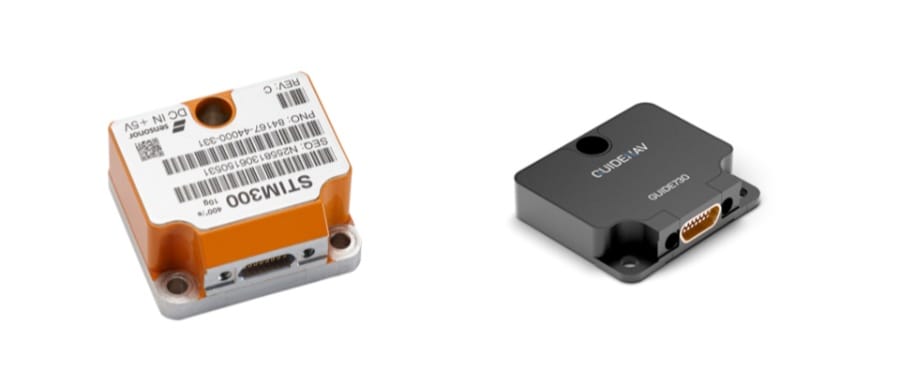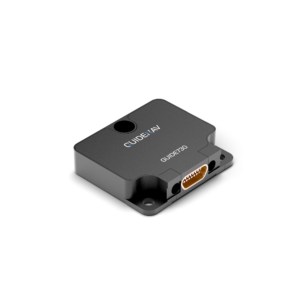The STIM300 is a tactical-grade MEMS IMU designed for high-precision applications in defense, aerospace, and autonomous systems. With gyroscope bias instability as low as 0.3°/h, it delivers strong performance in a compact and rugged form factor. While it stands out for its stability and export flexibility, its high cost and lack of integrated features may be limiting for some use cases.

Table of contents
Key Strengths of the STIM300
1. Tactical-Grade Precision
With gyroscope bias instability as low as 0.3°/h and ARW of 0.15°/√h, the STIM300 delivers high inertial accuracy, suitable for precision navigation, stabilization, and dead reckoning in GNSS-denied environments.
2. Solid-State, Rugged Design
The STIM300 uses a fully solid-state MEMS architecture with no moving parts, ensuring exceptional resistance to shock, vibration, and mechanical wear—ideal for harsh environments across land, air, and sea platforms.
3. ITAR-Free
Unlike many tactical-grade IMUs, the STIM300 is non-ITAR restricted, simplifying international sales, integration, and deployment in civil and dual-use programs.
4. Wide Operational Envelope
Calibrated across –40°C to +85°C, and resistant to magnetic and RF interference, the STIM300 maintains performance in extreme and dynamic conditions.
5. Flexible Digital Output and Configuration
With a standard RS-422 interface, configurable sampling rates (up to 2000 Hz), and built-in diagnostics, the STIM300 offers system designers the flexibility needed for easy integration and reliable feedback.
Main Limitations of the STIM300
High Cost
STIM300 remains relatively expensive compared to more recent MEMS IMUs that offer similar or even better performance, limiting its use in budget-sensitive or large-scale deployments.
Power Consumption
The relatively high power consumption may limit its suitability for portable or energy-sensitive platforms. Additionally, integrating with custom protocols can require considerable effort.
Size and Mechanical Integration
Its dimensions and weight, though compact for its class, may not be optimal for newer systems where space and payload constraints are more demanding.
Outpaced by Newer MEMS IMUs
In areas such as startup time, bias stability, and integration simplicity, modern MEMS IMUs have surpassed the STIM300—delivering similar or better precision with lower size, weight, and power (SWaP) demands.
What Is the Best Alternative to the STIM300 IMU?

GuideNav’s GUIDE730 is a compact, low-power tactical-grade IMU that offers a compelling alternative to the STIM300. Delivering comparable inertial performance with significantly reduced size, weight, and power consumption, it is especially well-suited for space- and energy-constrained applications such as UAVs, robotics, and autonomous systems.
| Specification | STIM300 | GUIDE730 |
|---|---|---|
| Gyro Bias Instability | 0.3 °/h | 0.2 °/h |
| Gyro Angle Random Walk | 0.15 °/√h | 0.03 °/√h |
| Gyro Full Scale | ±400 °/s | ±450 °/s |
| Accel Bias Instability | 0.05 mg (50 μg) | 20 μg |
| Accel Range | ±10g (options ±5g / ±30g / ±80g) | ±18 g (customizable) |
| Power Consumption | < 2 W | < 0.5 W |
| Size (mm) | 50 × 50 × 18 | 28 × 28 × 10 |
| Weight | 55 g | 15 g |
| Output Interface | RS-422 | RS-422 |
| Operating Temperature | −45 to +85 °C | −40 to +85 °C |
When comparing key specifications, GUIDE730 not only matches the STIM300’s tactical-grade capabilities, but also outperforms it in several critical areas—especially size, power efficiency, and integration flexibility. These advantages make it a clear choice for next-generation systems requiring tight SWaP and budget constraints.

Ultra-Compact and Lightweight
At just 28 × 28 × 10 mm and 15 g, the GUIDE730 is significantly smaller and lighter than traditional tactical-grade IMUs. It’s ideal for space-constrained systems like UAVs, robotics, and handheld devices.
Low Power Consumption
Consuming less than 0.5 W, the GUIDE730 is highly optimized for battery-powered and thermally sensitive platforms—enabling longer endurance and simplified thermal design.
Tactical-Grade Performance at Lower Cost
The GUIDE730 delivers high-end inertial performance at a more accessible price point, making it suitable for both defense-grade and commercial-scale deployments.
Modern MEMS Architecture
Built on next-generation MEMS technology, the GUIDE730 offers lower noise, improved bias stability, and better thermal behavior than legacy designs like STIM300.
Seamless System Integration
With a standard RS422 interface, the GUIDE730 ensures easy integration into systems already designed around STIM300, minimizing redesign effort.
The STIM300 remains a respected performer in tactical navigation systems—but it is no longer unrivaled. For engineers and integrators needing better SWaP performance, next-generation MEMS IMUs like the GUIDE730 offer tactical-grade accuracy in a more compact and cost-effective form.
If your application demands precision under constraints, now may be the time to re-evaluate your choice—and consider modern MEMS alternatives that meet today’s mission profiles with greater agility.

